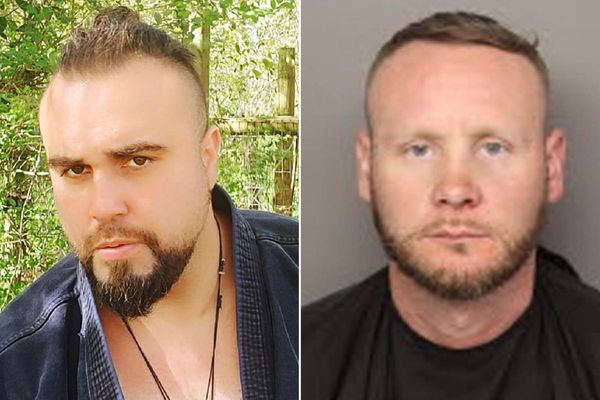
The Bureau of Indian Affairs created the first Native American boarding school in 1860 on the Yakima (now Yakama) Indian Reservation in Yakama, Washington. Shortly afterward in 1879, Congress established the first off-reservation, Native American boarding school — the Carlisle Indian Industrial School in Carlisle, Pennsylvania. The goal of these boarding schools, and many others, was to force Native Americans to assimilate into mainstream culture — to adopt a mid-19th century Protestant ideology. By 1926, 83% of school-aged Native American children were attending one of the 367 boarding schools across 29 states. The result was the systematic destruction of Native American cultures and languages, trauma, the use of abusive punishment, and even death from tuberculosis and the flu. Today, Native Americans are either boarding school survivors or they are likely one generation away from someone who attended a board school. Many of these boarding schools, which are the source of historical and current-day trauma for Native Americans, didn’t close until the 1970s.
The American Indian College Fund (College Fund), the country’s largest charity supporting Native higher education (including 35 Tribal Colleges and Universities), and the National Native American Boarding School (NABS) Healing Coalition have joined forces to provide scholarships to descendants of boarding school survivors. The College Fund and NABS awarded 20 scholarships of $3,000 each during the 2021-22 academic year. The scholarships acknowledge the experiences of boarding school survivors and allow families to come together and heal. In the application process, students — who must be U.S. citizens, tribal members or descendants of federally or state-recognized tribes — shared a 500-word essay about their relationship with a boarding school survivor in their family. This process was crafted to foster healing, while acknowledging the impact of this trauma on the lives of families.
Terri Lee Medina, a scholarship recipient and an enrolled member of the Winnebago Tribe of Nebraska who is studying business at Little Priest College in Winnebago, Nebraska, shared, “I was raised by my grandmother, and I remember my gaga would often describe the physical abuse she endured at school. She said she had nightmares of those times and how she fled on foot. She walked miles and miles and hitched a ride and walked the train tracks home to Winnebago because of her fear of being caught and sent back to boarding school.” Medina added, that her grandmother “spoke of the nuns and priests being horrible and doing terrible things to the Native American children; they would hit them with rulers even slap them across the face. There was sexual, verbal, and physical abuse that took place.” One story that stood out for Medina involved her grandmother getting into trouble for speaking a few words in her native language. A nun hit her grandmother with a ruler for speaking her language. However, as Medina shared, her grandmother grabbed the ruler and hit the nun back.

According to Cheryl Crazy Bull, president of the College Fund,“It is well documented that children and youth experienced all kinds of abuse. Assimilation was a tool used to ensure that Native peoples’ resources could be taken. Both taking land and access to food resources, and the removal of Indigenous people from their homeland is rooted in the genocidal practices of war, the deliberate spreading of diseases, and the deeply held belief of European colonizers of the superiority of their race.”
Tom SwiftBird, also a scholarship recipient and a member of the Oglala Sioux tribe who is studying tribal legal studies at Oglala Lakota College, said, “My great uncles were often hungry in the Rapid City boarding school. They would steal food from the pantry at night. At one point some of them tried to run away back to Pine Ridge Reservation. They ended up caught in a winter storm, and some lost toes and fingers to frostbite.” He continued, “After talking with my grandma, [I learned] the boarding school was mostly negative: a place where she and her family were mistreated and lonely.” Though even in a negative environment, Swiftbird mentioned that his grandmother saw some positives. She loved to learn and for the first time in her life, she had access to a library of books.

SwiftBird shared some of the long term impacts of attending a boarding school, noting that many of his relatives “suffered from addictions later in life.” Research shows that trauma from Native American boarding schools often results in addiction and other challenges in the lives of survivors.
Swiftbird also noted “I think [my family’s] feelings were complicated about the Lakota culture as well. They saw a lot of beauty in returning to the culture; yet having it drilled into them that everything Lakota was bad in their formative years carried some marks even through their old age.” When he was in college, taking Lakota classes, learning to speak, his grandmother found it hard to practice and speak with him. She appreciated the ways the Lakota language was going through a revival. She mentioned “loving to see more and more shirts and caps that said Native Pride on them.” Yet. Swiftbird lamented that even then, his grandmother “found it hard to speak the Lakota language” because speakers were punished for using it and “it was made to seem like a bad thing in the boarding school.” SwiftBird added with pride, “I go to school for my grandmother because she could not finish, and I will succeed for her.”

Tribal Colleges and Universities, which were born out of the Native American self-determination movement of the 1970s, and the American Indian College Fund support successful educational attainment, student self-identity, and strong self-esteem as a response to the societal and cultural distress that boarding schools cultivated. According to Crazy Bull, “Boarding schools, as a deliberate and largely successful effort to disrupt [the Native] way of living, require us to take the same kind of deliberate approach to restorative practices.”
Another scholarship recipient — Jonni Mondragon — also an enrolled member of the Blackfeet Nation and a student at Bay Mills Community College majoring in psychology, said, “My father was a student at Cut Bank Boarding School from 1965 to 1969 from ages 6 to 10. He had an extremely negative experience during his time there, and I believe it has affected his entire life and family…. he explained it was just like prison, and that ‘everything that happens in prison, happened there.’” From NABS Healing Coalition CEO Christine Diindiisi McCleave’s perspective, the scholarship program is a first step for boarding school descendants to heal intergenerational trauma. She stated that the program helps students to “change their own narratives, and restore what was taken from [their families] through Indian boarding schools.”
Unlike education foisted upon Native people, Tribal Colleges and Universities — institutions created by and for Native Americans — integrate cultural knowledge, history, and symbolism. They also offer community outreach and academic courses that are restorative, such as Native American arts and Native American studies degrees. The College Fund’s Crazy Bull reminds us, “Because boarding schools existed for the express purpose of eliminating Native identity to force assimilation, as educators we must mediate cultural knowledge and practice cultural traditions.”







